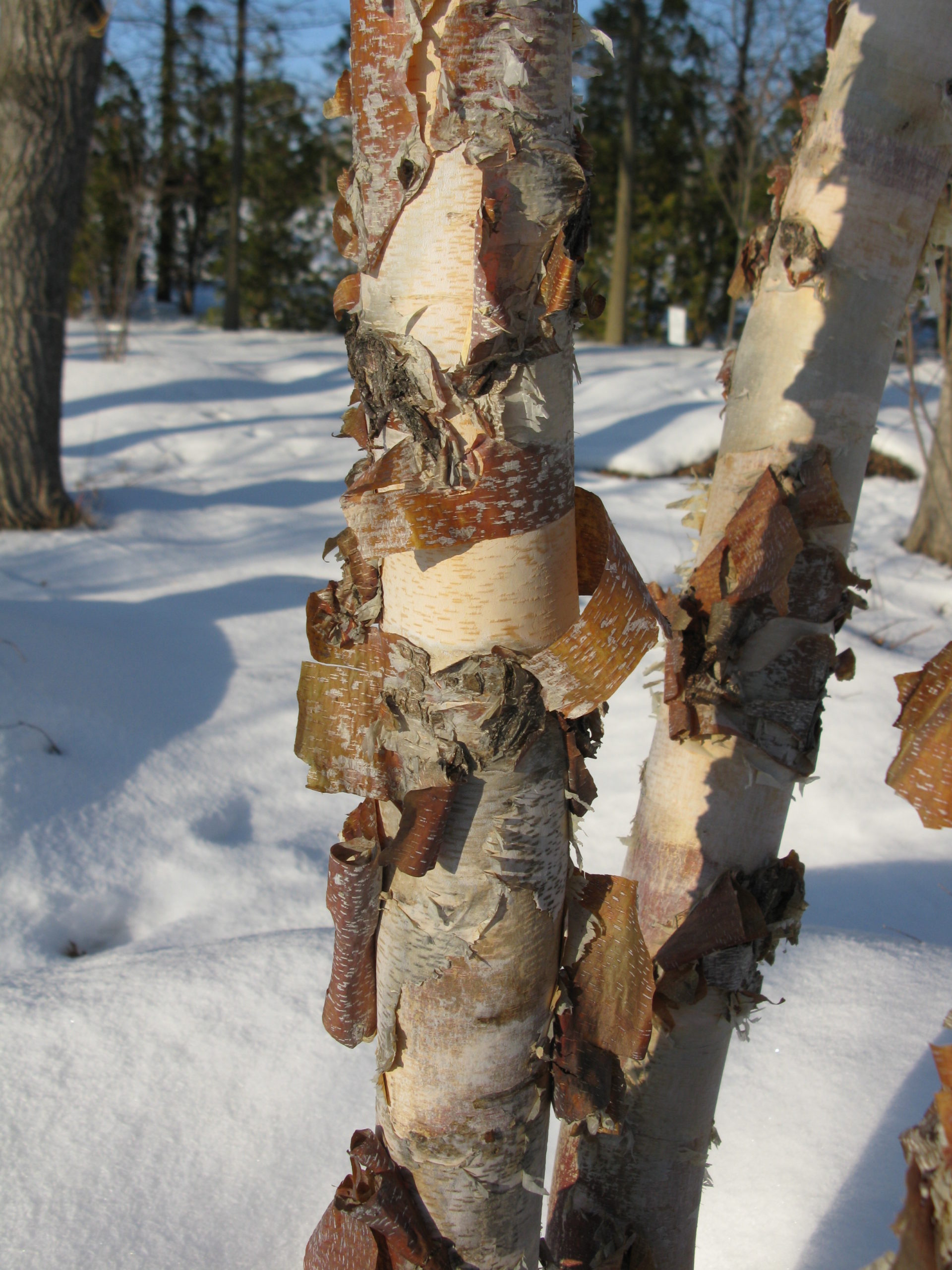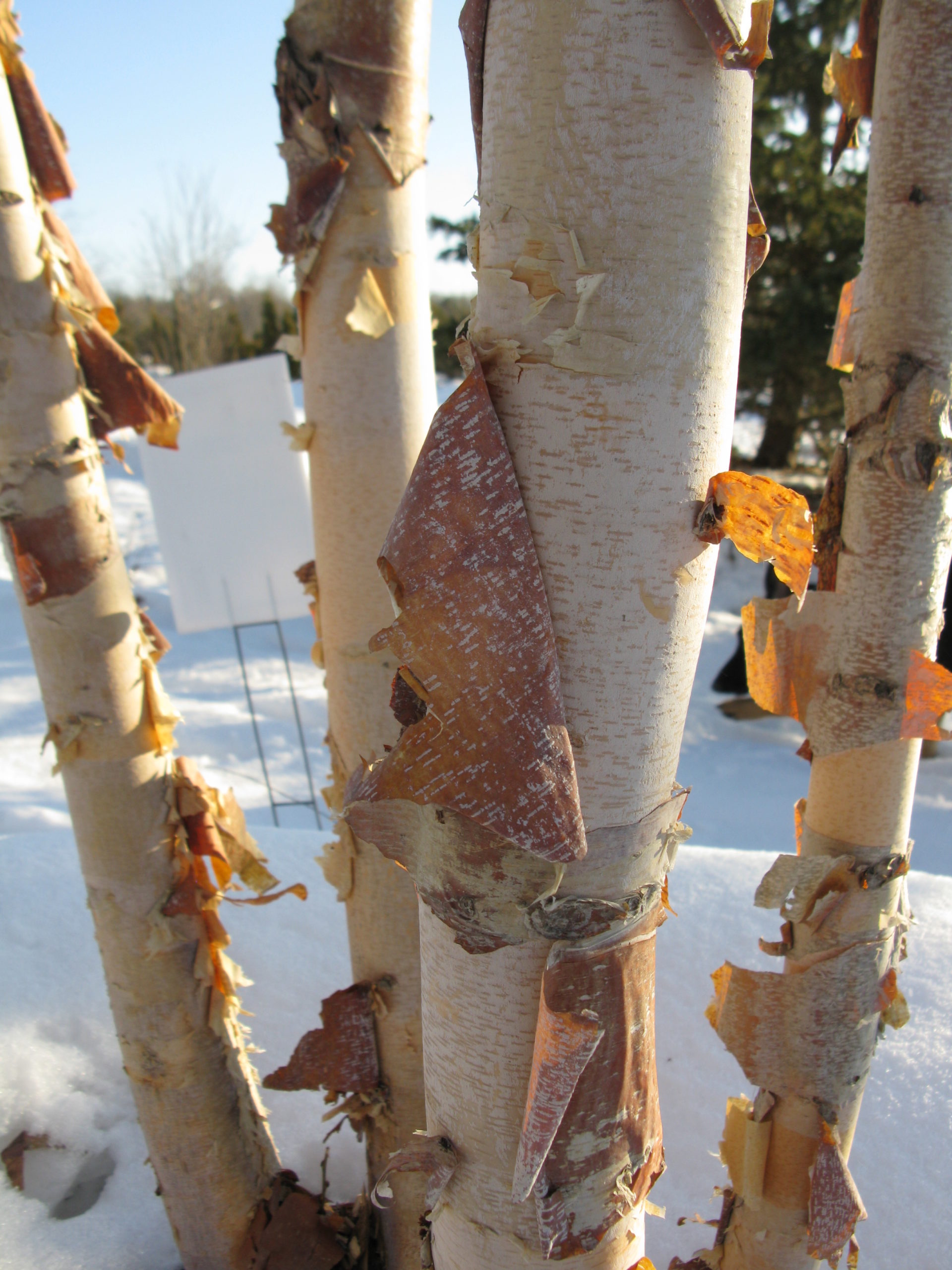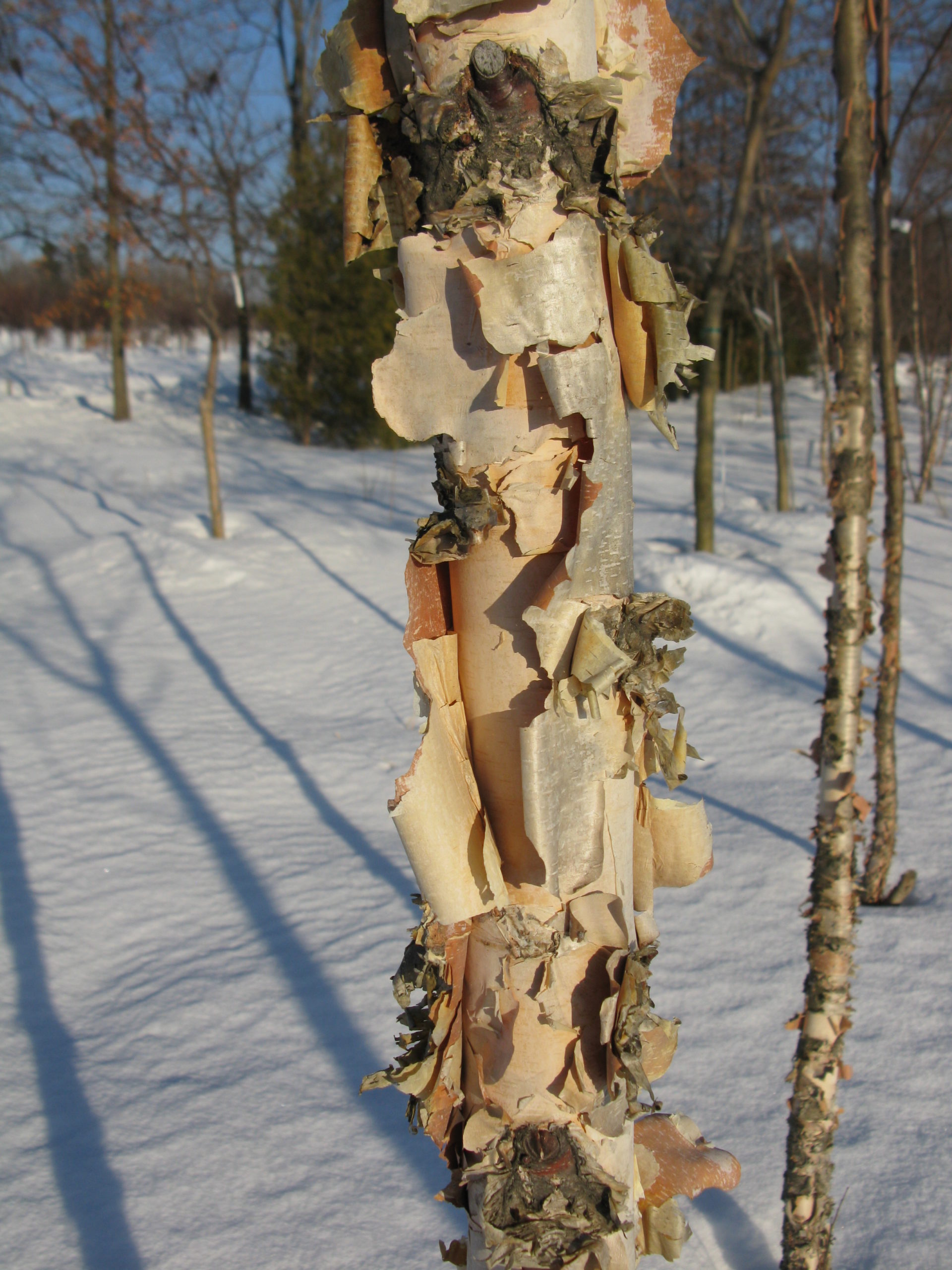





Why We Love It:
This native tree is a lovely fast-growing shade tree to add to your landscape. While the natural habitat of River Birch is near a streambank or low-lying area, they can tolerate a variety of residential landscape conditions and thrive. One of the most appealing features of this tree is its attractive bark. The bark varies among individual plants and ranges in color from silvery gray-brown to pinkish-brown when young. The bark on the trunk is either scaly or peels off in curly papery sheets or flakes of gray, brown, salmon, peach, orange, and lavender. This colorful exfoliating bark is most noticeable in the winter and will add significant interest to your landscape in the cold season.
Another appealing feature of the River Birch is the shimmering contrast when their leaves dance in the wind. They have a shiny, medium green upper surface and a slightly paler, more silvery tone on the underside. River Birches also nourish mourning cloaks and other butterfly larvae.
Know Before You Plant:
River birch is monoecious (separate male and female flowers on the same plant) with flowers arranged in catkins. The male catkins are 3” pendants, form as clusters on the ends of twigs in the fall and mature to release pollen the following spring. The male catkins produce generous amounts of pollen, which can be a significant source of seasonal allergies for some individuals.
In the fall leaves may turn a bright golden yellow but often the fall color is dull and brownish-yellow. Leaves may also fall throughout the summer if the tree doesn’t get enough water.
It is best to prune River Birch in the late summer or fall instead of late winter or spring. In the early spring the tree produces copious amounts of sap and will bleed profusely from the wounds if pruned during this time.
Where It Thrives:
River Birch makes an excellent specimen planting on moderately sized to large properties, or as a group of shade trees in a park or wide lawn. This tree is a good choice for low spots and wet soils (near streams or ponds). Many shade-loving plants (especially hostas) thrive when planted under River Birches.